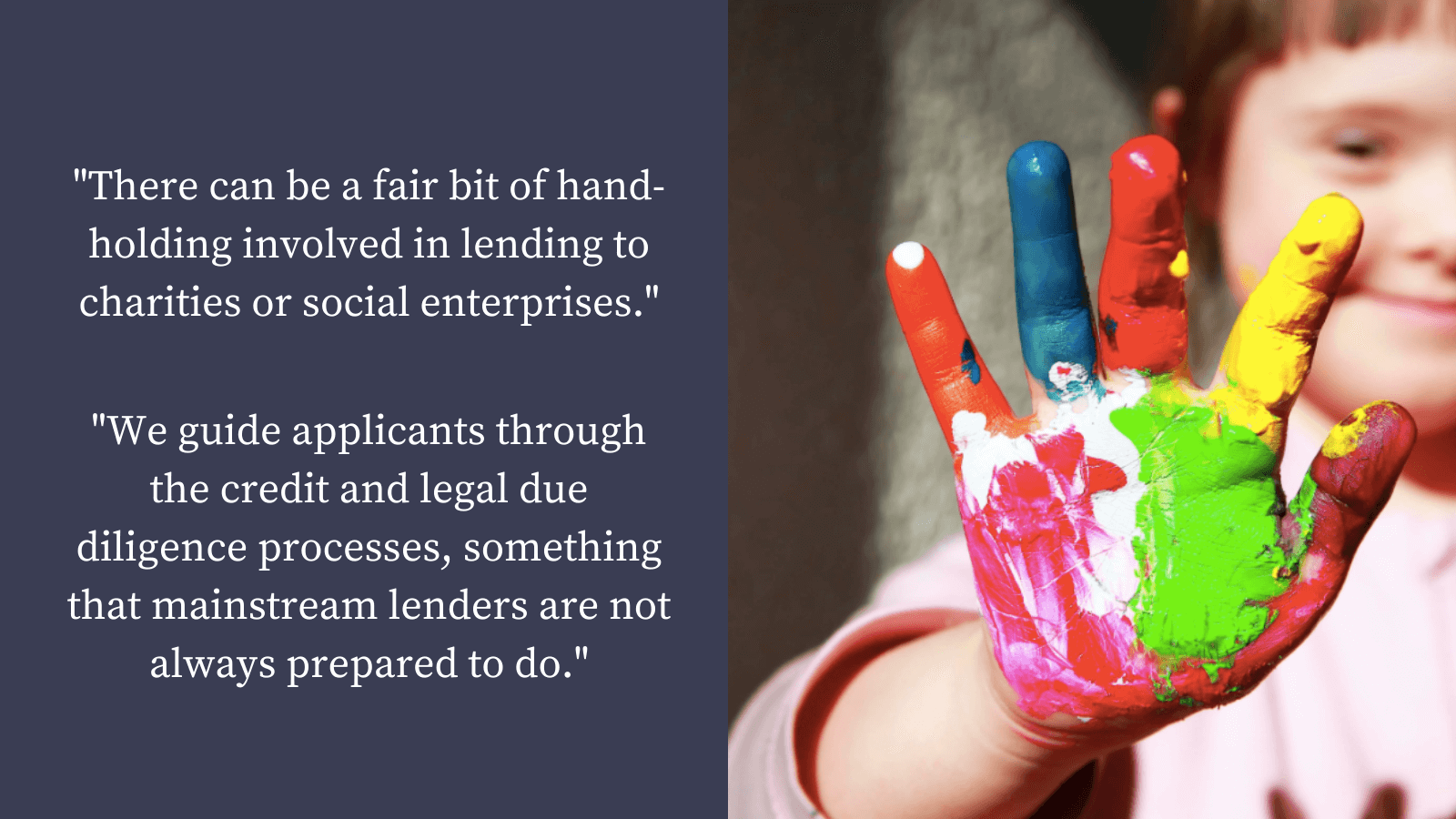Find out how philanthropists are stepping up to tackle the Youth Crisis.
A different approach to funding charities.
Charity Bank is a bank designed exclusively for charities and social enterprises. It offers funders the chance to support social impact by investing in the bank itself. We speak with Charity Bank CEO Ed Siegel to learn more about this unique approach to third sector financing…

What is Charity Bank and how does it work?
Charity Bank lends money to charities and social enterprises to enable them to strengthen and expand their services. Like any other regulated bank, Charity Bank’s ability to lend is limited by the amount of capital it has on its balance sheet. To lend more – and thereby enable more social impact – it needs to grow its regulatory capital base. The more regulatory capital the bank has, the more loans it can make to charities and, therefore, the more social impact it can have.
Because Charity Bank can leverage its capital with deposit raising, the impact of a capital investment is more powerful. Roughly speaking, the bank can make £8 in loans for every £1 in regulatory capital it holds. It does this by issuing shares, mainly to trusts and foundations, and through the private placement of subordinated loan notes to eligible high-net-worth and sophisticated investors as a social investment, an investment which also takes advantage of Community Investment Tax Relief (CITR).
CITR is a 25% tax credit given by HMRC on the face value of the investment. For example, for UK tax-payers, over a 5-year term instrument, this is the equivalent of a tax-free income of 5% per annum. The value of the loan note investment and the leverage it enables is put to work to provide funding for UK charities and social enterprises supporting disadvantaged communities.
Which organisations does Charity Bank lend to?
The bank supports a diverse range of charities and social enterprises. Considering that there are over 100,000 community interest companies and social enterprises in the UK – and around 169,000 registered charities – a rough estimate puts the bank’s total potential loan-base at around a quarter of a million organisations.
Among these, Charity Bank is particularly active in lending to the affordable housing sector. It works with a range of organisations in this space, from YMCAs housing people lacking secure accommodation and almshouses providing housing for the elderly, to smaller organisations supplying critical services, including one of Ed’s favourite client organisations – EVA Women’s Aid:
“EVA is a small social enterprise in Redcar supporting victims of domestic and other gender-based violence. We first helped EVA five years ago with a loan to purchase a property to use as a specialist safe house and recently approved a further loan for a second property which will provide more safe accommodation for women. Compared to some of our larger charity borrowers, EVA is relatively small; however, the immediate impact they have can be life-saving and the generational impact beyond this is phenomenal.”

What makes Charity Bank a unique solution for the sector?
Most mainstream banks are naturally focused on – and their processes largely designed for – larger, profit-driven businesses. By contrast, Charity Bank is designed to meet the specific needs of charities and social enterprises. Ed explains that whilst these organisations are not managed to maximise profits, many are still viable as potential borrowing customers of the bank, albeit ones sometimes requiring more guidance:
“There can be a fair bit of hand-holding involved in lending to charities or social enterprises. Many of our borrowers have not previously taken out a loan. We guide applicants through the credit and legal due diligence processes, something that mainstream lenders are not always prepared to do. Our aim is to make the applicant’s journey as smooth as possible.”
While traditional banks are driven by financial return for themselves and their investors, Charity Bank’s raison d’etre is the social impact that its lending can have. The bank prioritises social impact while seeking to lend sustainably, aiming to preserve its capital and make a modest financial return. This is why CITR is such a critical component of the loan note structure, offering an interesting taxable equivalent yield to investors while also keeping the bank’s cost of funds to a minimum.
What about the security of Charity Bank loans, especially after Covid?
The social sector has been hit hard by the pandemic. Some loans which organisations could afford a year ago are no longer viable options for them. We asked Ed how this will impact Charity Bank’s loan recovery rate, and what it plans to do to counter a potential dwindling demand for loans.
Charity Bank’s historical loan loss rate is incredibly strong, at just 0.3%. Ed attributes this in-part to a very thorough approach to credit evaluation, and the fact that the vast majority of the bank’s loans are well secured with real property. But beyond this, he cites the strong, mutually-beneficial relationships Charity Bank has with its portfolio enterprises:
“When things don’t go to plan at one of our borrowers, rather than go into automatic risk-mitigation mode, as we often see conventional lenders doing, we actually find ourselves drawing on our close relationship with the borrower to do what we can to help them. Many of these organisations feel a strong obligation to honour their commitments to us because of this close-knit relationship and the fact that the bank itself is an impact-led organisation. We go hand-in-hand with the charity in good times and bad.”
However, Ed also recognises that many organisations will not be in a position to take on pure loan financing, especially in the post-Covid environment. To get stalled projects off the ground, a combination of grant and loan funding may be a more viable option. With this in mind, Charity Bank is currently working to secure funding to roll out a blended finance offering that will be able to combine grants with repayable loans. Ed says:
“The hope is that this approach will make some charities’ projects viable again. For example, if a charity needs £100,000 but can only afford to borrow £50,000, a blended finance offering could see them given a £50,000 loan from Charity Bank alongside a £50,000 grant from a charitable trust or foundation funder.”
Looking to the future, Ed is positive. He draws optimism from the fact that – at the time of writing – no Charity Bank borrower had failed as a result of the pandemic. In fact, rising demand for loans has seen Charity Bank grow significantly over the past twelve months. Such a testament to the resilience of the third sector demonstrates the effectiveness of applying different approaches to financing charities, especially in times of crisis.

Ed Siegel is the CEO at Charity Bank.